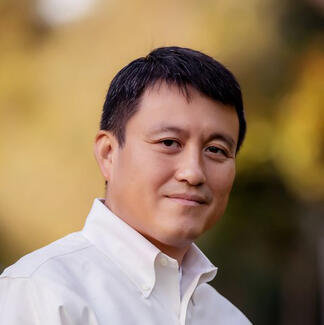
Shanhui Fan proposes a simpler design for quantum computers
A relatively simple quantum computer design that uses a single atom to manipulate photons could be constructed with currently available components.
Today's quantum computers are complicated to build, difficult to scale up, and require temperatures colder than interstellar space to operate. These challenges have led researchers to explore the possibility of building quantum computers that work using photons — particles of light. Photons can easily carry information from one place to another, and photonic quantum computers can operate at room temperature, so this approach is promising. However, although people have successfully created individual quantum "logic gates" for photons, it's challenging to construct large numbers of gates and connect them in a reliable fashion to perform complex calculations.
Professor Shanhui Fan and Ben Bartlett (PhD candidate, Applied Physics) have proposed a design that uses a laser to manipulate a single atom that, in turn, can modify the state of the photons via a phenomenon called "quantum teleportation." The atom can be reset and reused for many quantum gates, eliminating the need to build multiple distinct physical gates, vastly reducing the complexity of building a quantum computer. Their paper on the proposed design has been published in Optica.
The scientists' design consists of two main sections: a storage ring and a scattering unit. The storage ring, which functions similarly to memory in a regular computer, is a fiber optic loop holding multiple photons that travel around the ring. Analogous to bits that store information in a classical computer, in this system, each photon represents a quantum bit, or "qubit." The photon's direction of travel around the storage ring determines the value of the qubit, which like a bit, can be 0 or 1. Additionally, because photons can simultaneously exist in two states at once, an individual photon can flow in both directions at once, which represents a value that is a combination of 0 and 1 at the same time.
The researchers can manipulate a photon by directing it from the storage ring into the scattering unit, where it travels to a cavity containing a single atom. The photon then interacts with the atom, causing the two to become "entangled," a quantum phenomenon whereby two particles can influence one another even across great distances. Then, the photon returns to the storage ring, and a laser alters the state of the atom. Because the atom and the photon are entangled, manipulating the atom also influences the state of its paired photon.
Excerpted from: "Stanford engineers propose a simpler design for quantum computers"